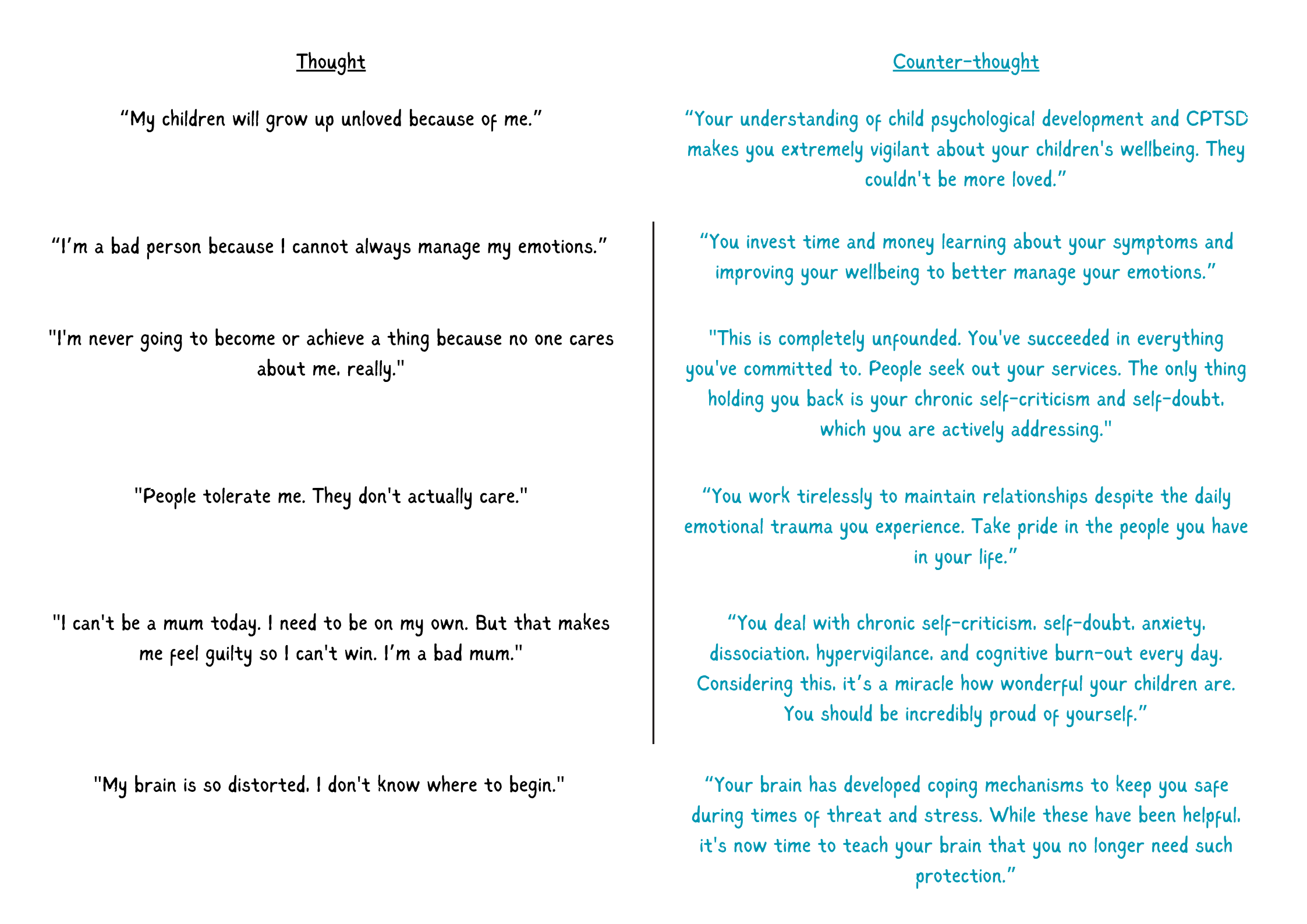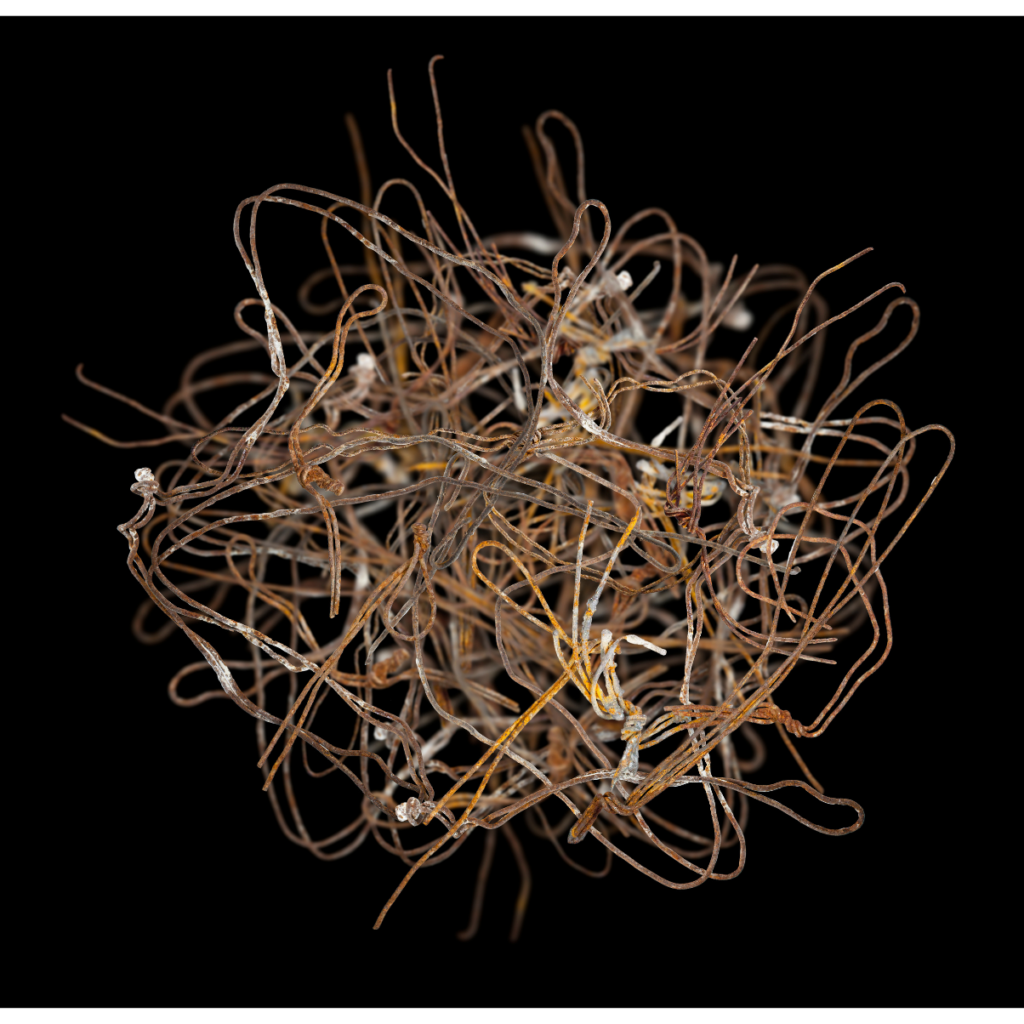I thought I’d share a less science-heavy blog post today, even though it still ties back to scientific concepts and conditions. Instead, I want to take a more anecdotal approach. Over the past few months, I’ve gained some profound insights, and I think sharing my experiences – particularly my maladaptive thinking patterns – might resonate with many of you and possibly offer some comfort.
Let’s dive into something deeply personal… I am 41 years old. For the last twenty years, I’ve engaged in various forms of therapy – counseling, CBT, and psychotherapy. For the past three years, I’ve been seeing a wonderful multidisciplinary psychotherapist once a month. Her insights into my diagnosis and conditioned thoughts and behaviours have been invaluable. These behaviours have impacted my mental health, sometimes holding me back and at other times propelling me forward in life. At the end of this post, I’ll give a special shout-out to my therapist, whose guidance has been instrumental.
So, what have I discovered?
I have a “disorder” (‘a group of symptoms involving abnormal behaviors or physiological conditions, persistent or intense distress, or a disruption of physiological functioning‘) called Complex Post Traumatic Stress Disorder (CPTSD). Check out my Instagram reel for a quick overview of CPTSD, its most common symptoms, and how these symptoms typically manifest.
How have these symptoms manifested in my life?
To explain, let me provide some context on why the past few months have been so significant. About a year ago, I was diagnosed with CPTSD. Interestingly, my therapist had been addressing the issue with me even before offering an official diagnosis, and I began piecing things together on my own through self-study and research. My suspicions were confirmed after she recommended I read “The Body Keeps The Score” by Bessel van der Kolk. (Unfortunately, I couldn’t finish the book because it was too much of a trigger for me, so it’s been put on my ‘will read when I’m stronger’ pile!). I strongly suggest watching the video below before continuing. It features van der Kolk discussing trauma, how it manifests, and its importance in therapy.
I’d also like to point out a comment by @helenvann3506, which says, “Trauma doesn’t always mean big events like assault. There can be a series of micro traumas that accumulate and have the same impact.” This insight resonates deeply with me. Often, people dismiss their own experiences because the more widely recognised PTSD is typically associated with war, extreme violence, or catastrophic events.
However, this perception is incorrect in the context of Complex PTSD. According to the IDC-11 (International Classification of Diseases), trauma that is prolonged, repeated, involves multiple forms, and occurs in situations where escape is difficult or impossible also qualifies as a diagnostic criterion.
Now that we have a better understanding of trauma and CPTSD, let’s explore how this has manifested in my life. I hope that sharing explicit examples of my day-to-day experiences with CPTSD will be helpful.
In early February 2024, my uncle passed away suddenly. His health deteriorated rapidly having been bitten by a sandfly in Spain, and just weeks later, he was gone. His death marked the beginning of a significant mental unraveling for me. Around the same period, four other acquaintances also passed away. While these individuals – family members, neighbours and friends – were not as close to me as my uncle, their deaths, three of which were unexpected and under tragic circumstances, still impact me.
I am currently exploring why my uncle’s death triggered my CPTSD symptoms. So far, it seems linked to the realisation that these events were beyond my control. (Reality check: my conscious, analytical mind of course understands that no one is actually in control of most things in life, but my neural entangled brain1 has developed ‘an illusion of control‘ as a coping mechanism against threat to survival and self-esteem). This is a concept I’m still unpacking and plan to revisit in a future post with a more scientific explanation.
Whatever the psychological reasons behind my heightened awareness of my CPTSD symptoms, it became clear that I had much work to do when my anxiety became more severe and frequent than ever before. Although I have always experienced a constant, underlying anxiety rooted in disordered thought patterns of guilt, shame, and self-deprivation, these recent episodes of anxiety have been particularly prominent and invasive.
In the featured Instagram post above, I listed 12 common symptoms of CPTSD, which is too extensive to cover in one entry. I’ll break down each symptom in future posts to continue this discussion. For now, I’ll focus on the most prominent symptoms that I’ve experienced in recent months.
Chronic negatvity, mostly about Self
I’m combining two symptoms here. While I often perceive the world in a negative, threatening way – a perspective shaped by constant exposure to threats to myself and others – it is my persistent negativity about myself that currently proves most debilitating. This deep-seated self-criticism is intertwined with another symptom of CPTSD: a chronic lack of self-worth accompanied by incessant self-criticism and guilt concerning my thoughts, emotions, and behaviours. I use the terms ‘chronic’ and ‘incessant’ deliberately. Everyone experiences self-doubt, self-criticism, and guilt at times, but those with CPTSD feel these intensely and perpetually. Every word, action, thought, and feeling is subjected to harsh self-judgment. It is a constant fight to keep our self-esteem above water, and most of the time we are drowning.
Below, you’ll find a typical example of the thoughts that run through my head when I’m automatically in ‘critique’ mode, alongside a counter-thought demonstrating what I can think when I’m not being self-destructive. This process is a common CBT technique used to challenge negative thoughts and cultivate more constructive thinking patterns. CPTSD often distorts our inner dialogue, and it requires continuous effort to reshape this dialogue into something less negative and self-destructive.

Take a moment to reflect on how you think about yourself. Are your thoughts mostly positive or negative? If they’re negative, consider how persistent these thoughts are. Do they impact your daily life? Have they influenced the direction of your life?
Avoidant-attachment
This is something that has always resinated with me, and it’s not something that I’ve only just begun exploring. However, it is something that seems extremely prevalent at the moment.
Attachment theory, developed by John Bowlby and further extended by Mary Ainsworth, is a psychological framework that explains the importance of attachment in human development. Bowlby, who originated the theory in the mid-20th century, proposed that children are biologically predisposed to develop attachments with caregivers as a means of survival. He suggested that the bonds formed during infancy have a significant impact on an individual’s emotional and relational life throughout their lifetime.
Mary Ainsworth expanded on Bowlby’s ideas through her research, notably through the “Strange Situation” assessment, which identified the nature of attachment relationships between infants and their caregivers. Ainsworth’s studies delineated three main styles of attachment: secure, anxious-avoidant, and anxious-ambivalent (later studies introduced a fourth style called disorganised/disoriented).
- Secure attachment develops when a caregiver consistently meets the child’s needs, resulting in the child feeling secure, understood, and calm.
- Anxious-avoidant attachment occurs when the caregiver is emotionally distant, leading the child to suppress their natural desire for closeness.
- Anxious-ambivalent attachment is seen in situations where the caregiver is inconsistent in their responses, causing the child to become confused and unsure about receiving love and care.
- Disorganised attachment emerges in the context of erratic or frightening caregiver behaviour, leading to a lack of clear attachment strategy.
Overall, attachment theory emphasises that early emotional bonds are crucial for normal social and emotional development, influencing relationships from infancy to adulthood.
Dr. Nicole LePera provides a compelling example of how anxious-avoidant attachment can develop during childhood.
Avoidant attachment significantly impacts my life, making closeness to others a trigger for stress. This creates a profound sense of loneliness. While part of me yearns for connection, the fear of it is so overwhelming that I’ve conditioned myself to withdraw and dissociate, losing the ability to comfortably engage with others. It feels like a constant battle between nature and nurture.
Lately, I’ve noticed that stress in those around me feels suffocating and prompts an instinct to escape. When people close to me are stressed, I tend to become very disengaged, which can lead to feelings of anger and frustration. This situation often leaves me grappling with feelings of guilt, shame, and a sense of narcissism.
If you want to delve more into this attachment style, I find Dr. Kim Sage’s explanation of avoidant attachment clear and helpful. Check out this YouTube short where she discusses how anxious-avoidant attachment appears in adulthood. For a deeper dive, her extended videos explore behaviours and strategies related to anxious-avoidant attachment in relationships, which you might find relevant.
If you’re interested in your attachment style, you can explore attachment more on Dr. Kim Sage’s channel or take a look at the various videos around attachment on this channel (note: these are US channels, so they use slightly different titles for each attachment style). It’s also worth noting that there may be cultural differences in the concept of “attachment”. In the secure attachment video, Dr. Judy Ho covers this idea.
I’ve only begun to scratch the surface of how CPTSD symptoms manifest in daily life. In future posts, I will delve deeper into common symptoms, providing real-life examples. My hope is that if you recognise any of these thoughts, feelings, or behaviors in yourself, you’ll be encouraged to explore ways to manage them.
Lastly, a huge shoutout to my therapist! You can listen to her insightful podcast here and make sure to follow her here for more valuable guidance.
Footnotes
- This metaphorically suggests that the pathways in my brain are intricately and confusingly interwoven, leading to a disordered or disrupted function. ↩︎
